

Leah Acker, MD, PhD
Department of Anesthesiology
The Anesthesiology, Cognitive Neuroscience, and Engineering Research (ACkER) Laboratory, funded by the National Institutes of Health (NIH), operates at the intersection of neuroscience, engineering, and clinical medicine. The primary objective is to bring groundbreaking discoveries from the bench directly to the patient bedside. Dr. Leah Acker, the lab’s principal investigator, is an engineer, neuroscientist, and practicing neurosurgical anesthesiologist. She is dedicated to creating non-invasive, drug-free neuromodulation technologies that enhance brain function post-surgery, particularly for older adults. Overall, the ACkER lab is wholly focused on creating technologies that aid in patient recovery following major surgical procedures.

R. Alison Adcock, MD, PhD
Department of Psychiatry and Behavioral Sciences
We study how the neuromodulatory systems shape models of the world held in long-term memory. Our approach uses human brain imaging to study explicit and implicit behavior during the active acquisition of information. We hope to leverage our findings into "behavioral neurostimulation" strategies for better mental health and educational practice.

Staci D. Bilbo, PhD
Department of Psychology and Neuroscience
We seek to understand the role of the immune system in brain development, and thereby the ways in which immune activation during early brain development can affect the later-life outcomes of neural function, immune function, mood and cognition. A particular focus is on microglia, the primary immunocompetent cells of the CNS, which are involved in multiple aspects of normal brain development and function.

Diego Bohorquez, PhD
Department of Medicine
Our ambition is to learn how to treat the brain from the gut. We are focused on dissecting the neural circuits that transform signals from food and/or bacteria in the gut into electrical inputs that modulate behaviors like the desire to eat. We recently discovered that, like taste cells in the tongue, the gut also has a sensory neuroepithelial circuit (J Clin Invest. 2015;125(2):782). This circuit may be the first point of integration of signals from food, bacteria, or viruses in the gut and behaviors in the brain.

Nicole Calakos, MD, PhD
Department of Neurology
We all know that as part of our daily lives we are constantly interacting with our environment - learning, adapting, establishing new memories and habits, and for better or for worse, forgetting as well. At the cellular level, these processes can be encoded by changes in the strength of synaptic transmission between neurons. The process by which neuronal connections change in response to experience is known as “synaptic plasticity” and this process is a major interest of our laboratory.

Arnaldo Carreira Rosario, PhD
Department of Biology
All brains must transition from inactive to active during development. While neural activity early in life is crucial for neural circuit wiring in many contexts, how the brain “turns on”, and how this initial activity influences circuit formation, remain unclear in any system. To study this evolutionarily conserved phenomenon, we combine imaging of neural activity in the intact fruit fly embryo, quantitative behavioral analysis, and advanced genetics. The fruit fly (Drosophila melanogaster) offers a unique set of powerful genetic tools and has an accessible nervous system that shares common features with those many animals, including humans. Our research program aims to reveal the underlying logic of how brains become active, and how early activity influences circuit formation to sculpt mature behaviors.

Anita Disney, PhD
Department of Neurobiology
There are two broad research programs in our lab. The first, firmly in the realm of ‘Discovery Science’, seeks to determine the role(s) that neuromodulators such as acetylcholine, noradrenaline, dopamine and serotonin play in specifying functional connectivity and excitability across the wired circuitry of the brain, and how this dynamic circuit specification supports flexible behavior. To do this, we first study brain structure (anatomy) and then use those anatomical data to develop hypotheses for in vivo study in behaving animals. Our in vivo studies deploy methods from physiology, pharmacology, chemistry, and psychophysics. The second program of research in the lab takes a Discovery Science approach to understanding the neuropathology underlying Alzheimer’s disease at the transcriptomic, metabolomic, and proteomic levels, with a focus on the female brain and the menopause transition.

Timothy Dunn, PhD
Department of Biomedical Engineering
Our lab designs and applies novel machine learning methods to measure and understand biological and artificial nervous systems. We are particularly interested in the brain’s control of behavior and how this control is disrupted in disease. Thus, a major focus of the lab is on establishing experimental technologies and algorithms that provide high-resolution 3D quantification of animal behavior across multiple scales, and analytical techniques for finding structure in these rich behavioral signals.

Kafui Dzirasa, MD, PhD
Department of Psychiatry and Behavioral Sciences
We study how neuropsychiatric risk genes interact with environmental stress to modify neural circuits that underlie normal emotional and cognitive function. We use in vivo electrophysiology, cell type specific neuromodulatory techniques (optogenetics and DREADDs), and quantitative analysis of behavior in genetically modified mice.

Steven Eliades, MD/PhD
Department of Head and Neck Surgery & Communication Sciences
Research in my group focuses on the neural basis of vocal communication. Communication is a dynamic process that encompasses both production and perception, occurring in an interactive and contextually-dependent fashion. We approach this both through basic scientific model systems and through parallel experiments in human subjects, including patients with hearing and communication disorders. We are particularly interested in questions of vocal self-monitoring, that is, how do you hear yourself when you speak, how does your brain process that information differently than others sound you might hear, and how do you use this to help you control your voice. We also have interests in sensory processing in naturalistic environments, and how the brain encodes sound differently than when listening in more traditional laboratory testing. We are also interested in the role of social context and decision making in animal communication. Finally, we use comparative approaches to determine how these processes are conserved between animals and humans, and how they are affected by hearing loss and other disorders of vocal communication. In addition to my research lab, I am a clinician-scientist and Otolaryngologists, with a focus in diseases of the ear, hearing, and balance (Otology). As part of this role, I have research interests in cochlear implants, in particular the learning and plasticity that affects implant outcome. I also collaborate with other clinicians and investigators to apply quantitative analysis to understanding and categorizing disorders of hearing and balance.
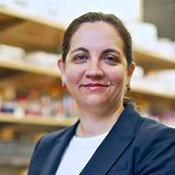
Cagla Eroglu, PhD
Department of Cell Biology
We investigate the cellular and molecular mechanisms that underlie synaptic connectivity in the CNS. Distinct from many other laboratories, we view astrocytes as an integral part of the synapse with roles in synapse development, function, and plasticity. Our approach involves anatomical and imaging-based assays in pure primary neuron-astrocyte cultures or genetically-modified mice.

Chantell Evans, PhD
Department of Cell Biology
The focus of the Evans Lab is to mechanistically define these diverse mitochondrial quality control pathways, including mitochondrial fusion and fission events, mitochondrial derived vesicles, and mitophagy. Our goal is to understand how these pathways collaborate to regulate the mitochondrial network in healthy neurons and what goes wrong in neurodegenerative disease.

Kevin Franks, PhD
Department of Neurobiology
We use the rodent olfactory system to study how the brain forms internal representations of the external world. We analyze small, functional neural circuits in the olfactory bulb and piriform cortex. We record and image odor-evoked responses in vivo, employ optogenetic circuit mapping in vitro, and use olfactory behavioral assays.

Lindsey Glickfeld, PhD
Department of Neurobiology
We study neural circuits in the mouse visual cortex in order to understand how the brain processes sensory information. We use a range of anatomical, electrophysiological, imaging, and behavioral approaches to determine how the synaptic organization of these circuits supports perception.

Bradley Goldstein, MD, PhD
Head and Neck Surgery and Communication Sciences
A surgeon-scientist, Dr. Goldstein focuses his clinical work on rhinology and sinus surgery with an interest on olfactory loss. His basic research program is broadly focused on understanding damage and repair in the peripheral olfactory system, using cell culture and mouse models as well as human tissue and single-cell techniques.

Jörg Grandl, PhD
Department of Neurobiology
We study molecular and cellular mechanisms of rapid mechanotransduction, which is initiated within less than one millisecond and enabled by force-gated ion channels.

Warren Grill, PhD
Department of Biomedical Engineering
Our work develops neural prostheses, including mechanisms of and technology for deep brain stimulation, restoration of control of bladder function, and spinal cord stimulation for chronic pain. We conduct computer-based modeling of neurons and electric fields, in vivo stimulation and recording in pre-clinical models, and clinical feasibility / physiology experiments in humans.

Jennifer Groh, PhD
Department of Neurobiology, Department of Psychology and Neuroscience
We investigate how the brain compares and fuses what we see with what we hear. Our research combines experimental and theoretical approaches to measure and manipulate neural activity while animals perform behavioral tasks.

Stephen Harward, MD, PhD
Department of Neurosurgery
Our research aims to understand how ultrasound applied outside of the brain can modulate neuronal activity and potentially influence both pathology and physiology. By understanding the molecular and cellular mechanisms involved, we hope to translate these results into the development of novel uses of ultrasound to treat a wide variety of neurologic conditions in humans with exquisite precision but without the need for invasive surgery or device implantation. Diseases we are interested in include epilepsy, movement disorders, depression, anxiety, PTSD, addiction, obesity, and memory impairment.

Josh Huang, PhD
Department of Neurobiology
We study the development and function of cortical circuits underlying motor control and cognitive processing. Our research program integrates multi-faceted approaches from genetic engineering to single-cell genomics, developmental neurobiology, imaging, electrophysiology, and behavioral analyses, and aims to link fundamental neuroscience to the understanding and treatment of neuropsychiatric disorders.

Scott Huettel, PhD
Department of Psychology and Neuroscience
We study the neural basis of decision making and related aspects of cognition. Key techniques include functional neuroimaging, computational modeling, eye tracking and other behavioral measurements, genetic and hormonal analyses, and other behavioral and physiological measures in human participants.

Court Hull, PhD
Department of Neurobiology
We study the organization and physiology of neural circuits in the brain involved with coordinating body movements. These studies utilize optical and electrical recordings from mice, both in vitro and in vivo, in order to understand how these circuits operate during motor behaviors.

Ru Rong Ji, PhD
Department of Anesthesiology
We investigate the molecular and cellular mechanisms underlying the induction, maintenance, and resolution of persistent pain. We focus on spinal cord synaptic transmission and the role of glial cells. We use a range of molecular, cellular, electrophysiological, and behavioral approaches in transgenic mice.

Jeremy Kay, PhD
Department of Neurobiology, Department of Ophthalmology
We study how the developing nervous system builds neural circuits. We seek to identify cellular and molecular mechanisms that generate different types of neurons, that endow them with specific identities, and that wire them together into circuits with a coherent function. Further, we would like to know what happens to circuit function when these mechanisms go awry, as may happen in neurodevelopmental disorders.

Seok-Yong Lee, PhD
Department of Biochemistry
Our overarching goal is to understand how nociceptors detect and integrate disparate signals in response to changes in environmental or physiological cues. Our current research aims are to elucidate the molecular mechanisms of somatosensation and nociception by sensory receptor ion channels known as transient receptor potential (TRP) channels, to understand the molecular basis of their disease mutations, and to explore their therapeutic potentials. We employ a combination of structural, functional, pharmacological, computational biology, chemical biology, cellular, and animal studies. .

Nuo Li, PhD
Department of Neurobiology
We use motor planning as a window into understanding the internal processes that govern cognition. The act of motor planning taps into multiple aspects of multiple aspects of flexible behavior, such as decision making and short-term memory. Our research seeks to mechanistically describe how neural circuits produce these phenomena. Electrical activity of neurons and cellular properties form the basis of neural circuits. Our research program aims to establish platforms upon which we can understand why and how genetic or cellular dysfunctions are linked to abnormal or maladaptive motor and cognitive behaviors in disease models.

Hiroaki Matsunami, PhD
Department of Molecular Genetics and Microbiology
We investigate how we detect and discriminate tens of thousands of odorous chemicals using hundreds of olfactory receptors encoded in the mammalian genome. We mainly use molecular genetics, cell biology, imaging and behavioral approaches in mice.

Jenna McHenry, PhD
Department of Psychology & Neuroscience
The goal of the research in my lab is to define the fixed and flexible features of molecularly defined neural circuits that direct ethological forms of social and nonsocial motivated behavior. We focus on hypothalamic subnuclei within key social and homeostatic control centers, and their connections with midbrain dopaminergic reward systems.
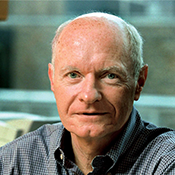
James O. McNamara, MD
Department of Neurobiology
We seek to elucidate the mechanisms of epileptogenesis, the process by which epilepsy develops and progresses. Signaling through the BDNF receptor, TrkB, is central to these mechanisms. Our approaches include behavioral, genetic, electrophysiological, and advanced imaging studies of genetically modified mice.

Kate Meyer, PhD
Department of Biochemistry
The Meyer Lab studies RNA regulatory pathways in the nervous system. We have a particular interest in understanding how RNA methylation (m6A) controls gene expression programs in the brain to contribute to human health and disease.

Richard D. Mooney, PhD
Department of Neurobiology
Our research aims to identify the neural substrates for vocal learning and communication. We use both songbird and rodents to achieve these aims. Songbirds are one of the few non-human animals that learn to vocalize and serve as the preeminent model in which to identify neural mechanisms for vocal learning. The songbird is ideal for this purpose because of its well-described capacity to vocally imitate the songs of other birds, and because its brain has a constellation of discrete, interconnected brain regions (i.e., song control nuclei, referred to collectively as the song system) that function in the patterning, perception, learning and maintenance of song.

Eva Aimable Naumann, PhD
Department of Neurobiology
The Naumann Lab is interested in how neural circuits across the entire brain guide behavior and how individuality manifests within these circuits. Our goal is to understand how precisely the neural circuits underlying sensory systems of individuals form, develop, and function. To dissect such circuits, we use the genetically accessible and translucent zebrafish to map, monitor, and manipulate neuronal activity. By combining whole-brain imaging, behavioral monitoring, functional perturbations, neuroanatomy, computational modeling, and machine learning, we aim to generate brain-scale circuit models of simple behaviors in individual brains.

John Pearson, PhD
Department of Neurobiology
What makes us intelligent? How do the hundred billion cells in our brain give rise to speech, music, and athletic performance, and how does this process break down in disease? Just as fixing a computer requires a mental model of how its parts work together, treating brain disorders will require understanding the fundamental principles by which the brain develops, learns, and maintains its function over time.
Our lab works to identify these fundamental principles. In close collaboration with experimentalists, we devise new methods for distilling scientific hypotheses from large and complex data sets, and we build AI-driven systems that adapt experiments to incoming data in real time. Our ultimate goal is to produce theories that allow both scientists and clinicians to reason about brain function, understand existing data, and devise new treatments..

Jeffrey Russ, MD, PhD
Department of Pediatrics
The mission of the Russ lab is to advance our understanding about how specific neurons in the cerebral cortex are altered in perinatal brain injury and genetic neurodevelopmental disorders, and then to use this information to identify new molecular targets to treat these disorders.

Nicole Scott-Hewitt, PhD
Department of Cell Biology
The Scott-Hewitt lab is investigating how interactions between cells and molecules derived from the nervous and immune systems influence critical molecular, cellular, and organismal functions. Our work aims to dissect glial and neuroimmune mechanisms that underlie vulnerability in aging and disease, and to provide mechanistic insights into how intercellular interactions and immunological changes impact cognitive function and contribute to neuropathology.

Debra Silver, PhD
Department of Molecular Genetics and Microbiology
We study how neurons of the cerebral cortex are generated from neural progenitors during development. Our approach encompasses mouse genetics, microscopy (both fixed and live imaging of brain slices), and in utero manipulation of gene expression.

Scott Soderling, PhD
Department of Cell Biology
We study the mechanisms of synaptic development and plasticity that are regulated by signaling to the dendritic spine cytoskeleton that are also implicated in neuropsychiatric disorders. We use a wide range of tools for these studies, including genetically engineered mice, biochemistry, in vivo viral expression, live imaging, and behavioral analysis.

Marc Sommer, PhD
Department of Biomedical Engineering
Dr. Marc Sommer studies neuronal circuits of the brain. Research in his laboratory involves recording from single neurons and studying the effects of inactivating or stimulating well-defined brain areas. His goals are to understand how individual areas process signals and how multiple areas interact to cause cognition and behavior. Results from the work are guiding the design of vision-based models and robots.

Allen Song, PhD
Department of Radiology
We center our research on the acquisition methodology, processing strategies and contrast mechanisms for brain MRI. We use these approaches to investigate the functional neuroanatomy and brain connectivities in both healthy and diseased populations in humans.

Derek Southwell, MD, PhD
Department of Neurosurgery
Our research group seeks to improve the treatment of neurologic diseases and injuries. We are examining how neuronal cellular dysfunction and abnormal brain activity patterns are related, and how they reflect and contribute to nervous system pathophysiology. We apply this knowledge to the development of cell- and device-based therapies that correct or compensate for cellular and circuit-level processes underlying neurologic disease and injury.

Michael Raphael Tadross, MD, PhD
Department of Neurosurgery
The Tadross lab develops technologies to rapidly deliver drugs to genetically defined subsets of cells in the brain. By using these reagents in mouse models of neuropsychiatric disease, his group is mapping how specific receptors on defined cells and synapses in the brain give rise to diverse neural computations and behaviors. The approach leverages drugs currently in use to treat human neuropsychiatric disease, facilitating clinically relevant interpretation of the mapping effort.

Dmitry Velmeshev, PhD
Department of Neurobiology
The goal of the Velmeshev lab is to understand normal human brain development and neurodevelopmental diseases at the single cell level.
We are particularly interested in gaining a holistic view of how genetic programs instruct neural progenitors that give rise to the diverse cell types of the brain and guide formation of neuronal circuits, and how these processes are affected in brain disorders, such as autism.

Jonathan Viventi, PhD
Department of Biomedical Engineering
We use flexible electronics to create new technology for interfacing with the brain at high resolution over large areas. These new tools can help diagnose and treat neurological disorders such as epilepsy, and help improve the performance of brain machine interfaces.

Pelin Volkan, PhD
Department of Biology
We study the developmental processes that establish the basic organizational and functional principles of the neuronal circuits in the brain. We investigate how the neuronal circuits assemble, functionally mature, and remodel along developmental and evolutionary time scales. We apply molecular, developmental and systems level approaches in the olfactory system of the genetically tractable Drosophila melanogaster.
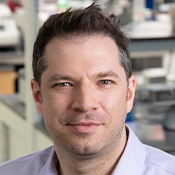
Andrew West, PhD
Departments of Pharmacology and Cancer Biology and Neurology
The “other” West lab focuses on identifying critical pathogenic mechanisms underlying neurological diseases like Parkinson’s disease with the goal of developing new therapeutics to block disease progression. The West lab is housed in the brand-new Duke Center for Neurodegeneration and Neurotherapeutics and works with clinicians in the discovery of biomarkers for disease progression and therapeutic responses together with basic neuroscientists in defining pathways in neurons and immune cells that drive disease.

Anne E. West, MD, PhD
Department of Neurobiology
Welcome to the West lab! We are a diverse and enthusiastic group of researchers investigating the molecular mechanisms of chromatin regulation that orchestrate neuronal development, synapse plasticity, and behavioral adaptations to sensory input.

Marty Woldorff, PhD
Department of Psychiatry and Behavioral Sciences
We use a combination of electrophysiological (ERP, EEG) and functional neuroimaging (fMRI) methods to study the mechanisms of attention and related cognitive processes in humans. Themes include: (1) Attentional and cognitive control; (2) Attentional modulation of perceptual processes; (3) Influence of training on attention; (4) The relationships between attention and reward.
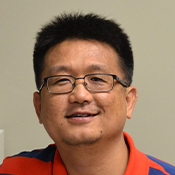
Dong Yan, PhD
Department of Molecular Genetics and Microbiology
Our research focuses on understanding the molecular mechanisms underlying neural circuit formation during development and regeneration following injury. Through classic genetic analysis, laser microsurgery, in vivo live imaging technique, and molecular and cellular manipulations in C. elegans, we are discovering conserved mechanisms that play key roles in neural circuit formation, axon regeneration, and degeneration.

Rebecca Yang, PhD
Department of Neurobiology
Our lab is interested in understanding the circuit mechanisms by which animal brains decode the biological value (e.g., attractiveness) of sensory stimuli to guide simple decisions. We use Drosophila egg-laying site selection as our model system. We found that Drosophila females show clear preferences when tasked to rank the relative attractiveness of suitable egg-laying sites.

Huanghe Yang, PhD
Department of Biochemistry
Our laboratory focuses on the biology of ion and lipid flip-flop across cell membranes. Utilizing multidisciplinary approaches, we aim to: 1) elucidate the mechanisms of ion and lipid transport through cell membranes; 2) uncover the biological functions of ion and lipid transport in health and disease; and 3) develop innovative strategies to target ion and lipid transport for the treatment of various human diseases. These include neurological disorders such as epilepsy, movement disorders, and neurodegenerative diseases; thrombotic conditions like stroke and heart attack; and pregnancy disorders including preterm birth, growth restriction, and preeclampsia.

Henry Yin, PhD
Department of Psychology and Neuroscience
We study neural circuits underlying the learning and generation of actions. We use in vitro and in vivo electrophysiology, optogenetics, and quantitative analysis of behavior in rodents.
Faculty Labs Not Accepting Graduate Students
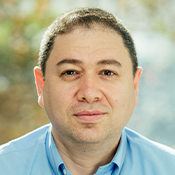
Boris Kantor, PhD
Department of Neurobiology
Viral Vector Core at Duke University is a full service facility with extensive experience in the production of viral-based platforms for gene delivery including HIV-1-based vectors, adeno-associated vectors (AAV) and Rabies Viruses. The vector core provides comprehensive service for researchers both intramural and extramural to Duke, interested in utilizing viral-based method of gene delivery.

Stephen Lisberger, PhD
Department of Neurobiology
We investigate how the brain learns motor skills, and how we use what we see to guide how we move. Our approaches involve studies of eye movements on behaving non-human primates.

Dale Purves, MD
We study visual and auditory perception and the neurobiological underpinnings of perceptual phenomena, including the evolution of simple networks in simulated environments. We employ studies of human perception along with computer simulations.

Sidney A. Simon, PhD
Dr. Simon's laboratory studies the interaction of chemical stimuli with cultured and intact trigeminal ganglion neurons and taste receptor cells in culture, in anesthetized and in awake behaving animals. We investigate how chemicals that are either bitter and/or irritating (e.g., nicotine, capsaicin, colloidal particles) interact with particular types of receptors (e.g. nicotinic acetylcholine receptors or vanilloid receptors) to produce a bitter or irritating or painful sensation.